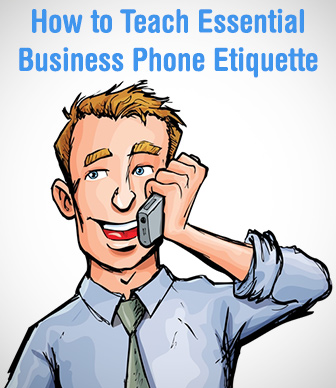Who Called and Said She’s Interested in Our Service?: Teaching the Art of Leaving and Taking Phone Messages


I laughed, a little embarrassed, realizing I was out of habit practicing business phone etiquette with a personal friend. However, the reverse is a far more common problem in my experience: one of the reasons I give my full name and phone number is that more than once I’ve answered the phone to be greeted with “Hi, this is Steve,” and was left wondering which Steve was speaking: my brother? Fellow committee member at work? Repair person? Voices can be difficult to recognize over the phone, even those belonging to someone you are close to, so determining who is on the line can be challenging without a full name. In addition, I also get messages in my voice mail to the effect that Steve is calling and I should call back—with no contact information or reason for the call. Given the choice of calling all the people I know named Steve to find out if they called or waiting for the Steve in question to call back, I usually choose the latter. But the entire problem could be avoided if people would practice correct telephone etiquette—not a skill that comes naturally, even for native speakers of English, but it can be of critical importance in the business world, especially. Imagine if Steve had called about a previously discussed sale or service, for example, and I didn’t get back to him because I didn’t know who he was or what he wanted: that potential business would have been lost to him.

A phone call I still remember years after it took place is the young woman who greeted me by demanding “Is this Mrs. Levy?” Fairly certain that this was a solicitor but also concerned it might be an important call, I asked who was calling. “Ma’am, are you Stacia Levy?” was her only response. This went on for awhile until she finally told me she was calling from a local department store—which I decided not patronize again due to this call. The caller should be the first to identify herself and should not demand the callee’s identity.
Another “pet peeve” I have is the caller who barges into business without offering any pleasantries. “Is Mark there?” my husband’s friend always demands when calling, even though he knows me and has enjoyed hospitality at our house numerous times, enough to warrant a “Hi! How was your vacation?” before moving into the reason of his call. This friend is not rude in person; he just lacks the phone etiquette that states you do not treat someone you know like an answering service. The reverse of this is the person who drags on the pleasantries a little too long: our accountant, for example, always goes on at length about her vacation, family, and outings before settling down to discuss the reason for the call, that year’s tax return. A careful balance between these two extremes is necessary.
After you have finished a call and are leaving a message either to a person or machine, it’s very helpful to repeat who you are and your contact information because often callers think they gave this information at the outset, but didn’t, or the person taking the message may have forgotten it. Stating your name and number(s) at the end just further ensures the party addressed will be able to get back to you.
Likewise, if you are the one taking the message, make sure you have the caller’s full name—even if you are certain it is John Smith calling, for example, and not John Jones or John Lee, verify it. And even if you are certain the boss has Mr. Smith’s contact information in his Smart Phone, ask anyway—records have a strange way of getting deleted just as you begin to depend on them. Finally, getting a reason for Mr. Lee’s call saves you the embarrassment of telling the boss “I dunno,” when he asks what Mr. Lee wants.

Even though it might seem obvious, the fact that people have such poor telephone manners demonstrates that they aren’t so obvious. This is also a good time to review with students two important values of communication in English in general: clarity and brevity. Who the caller is, his or her contact information, and the reason for the call are the basics of a “good” business call/message.
With a volunteer, demonstrate calling and leaving a message in a business situation. Also, show the components of a good telephone message on the board.
Finally, have students practice in pairs making calls and leaving and taking simple messages that may be fact or fiction: e.g., “There’s a party tonight at my house. I hope you can come.” This can be extended as homework, with students getting at least three classmates’ contact information in class and then later calling at home to either report some important “news” to their classmates or leaving a message on their answering machines.
Strong business telephone etiquette is one more skill that will create a favorable impression on an employer and lead to a possible job offer.